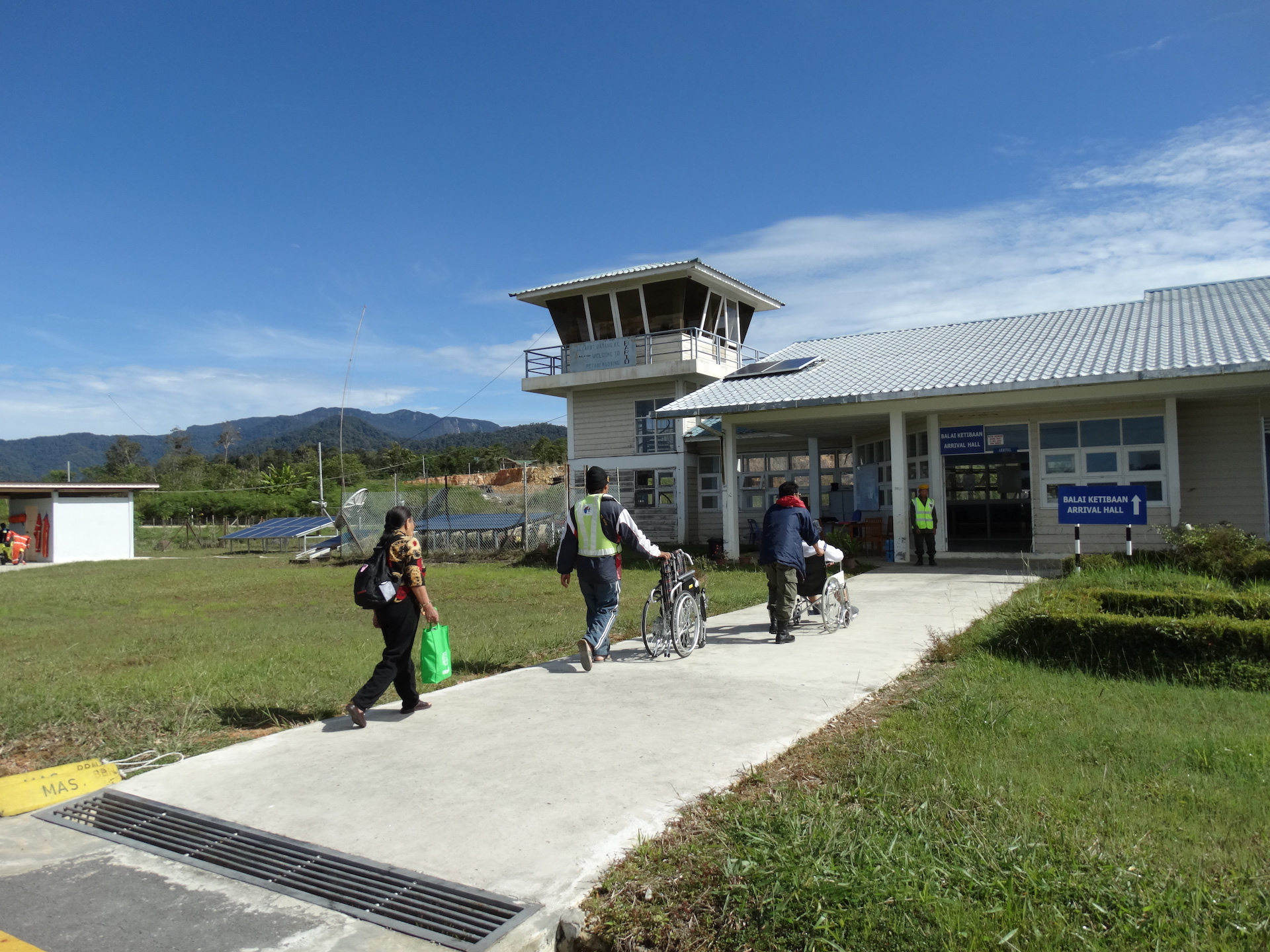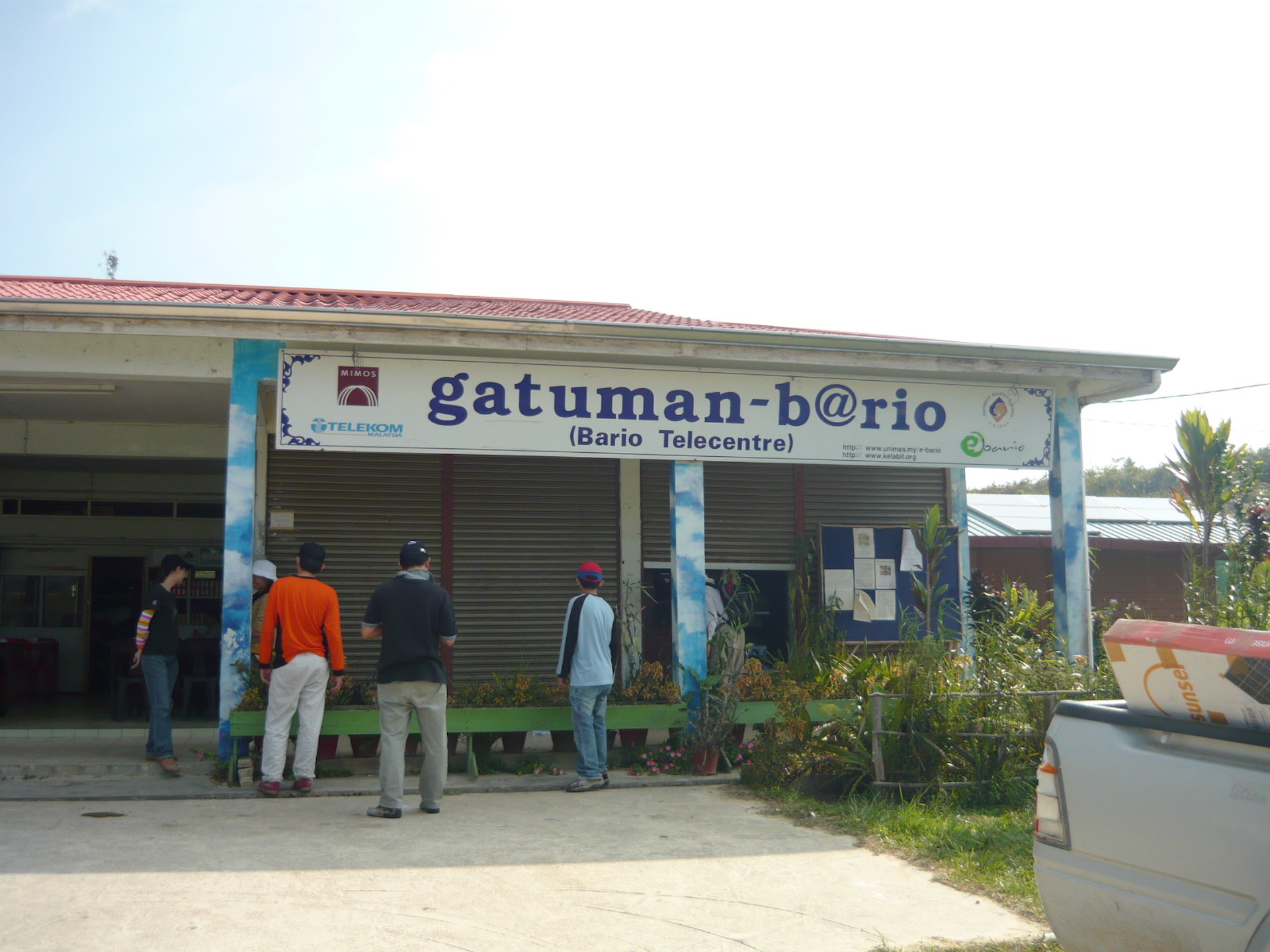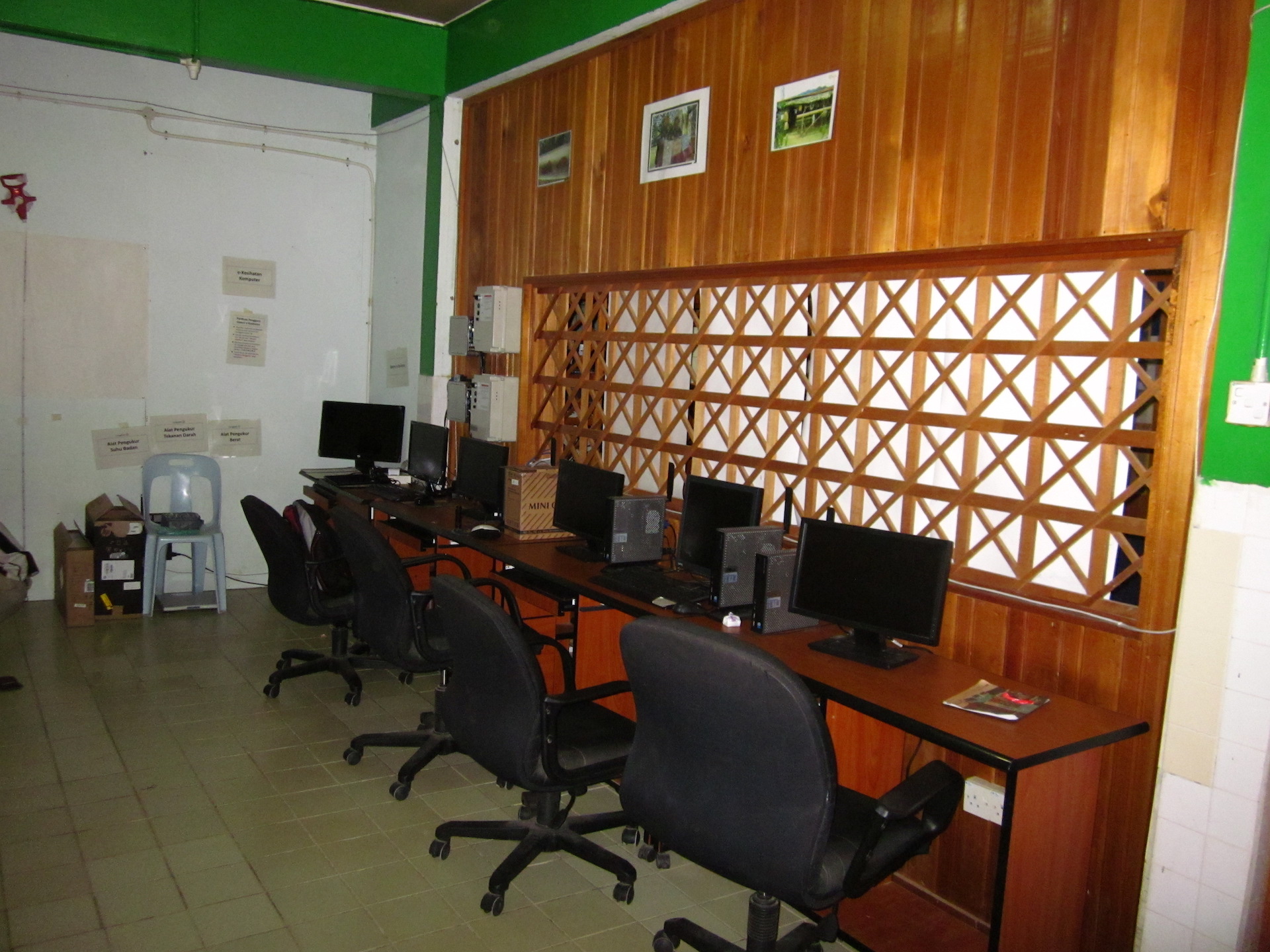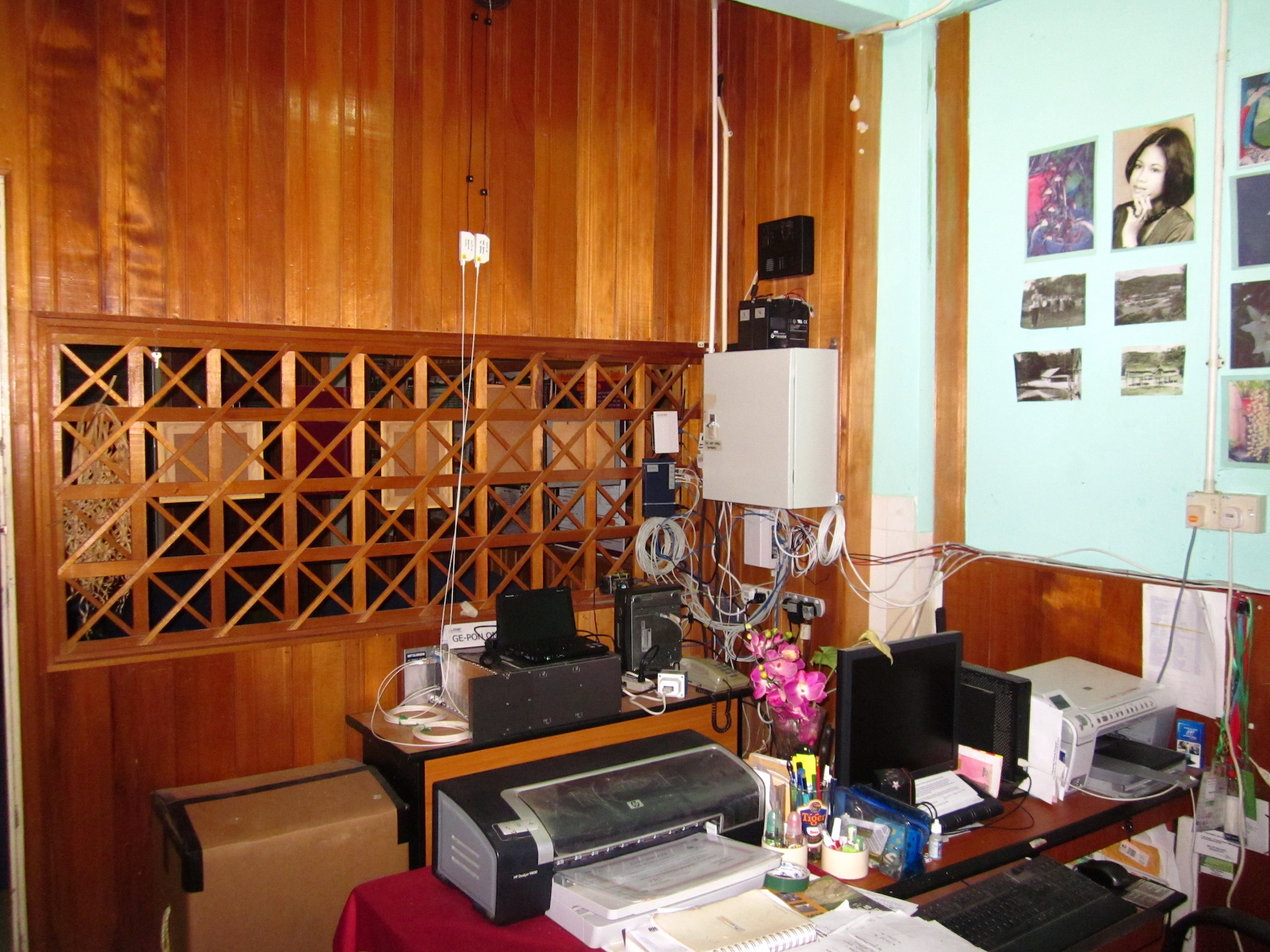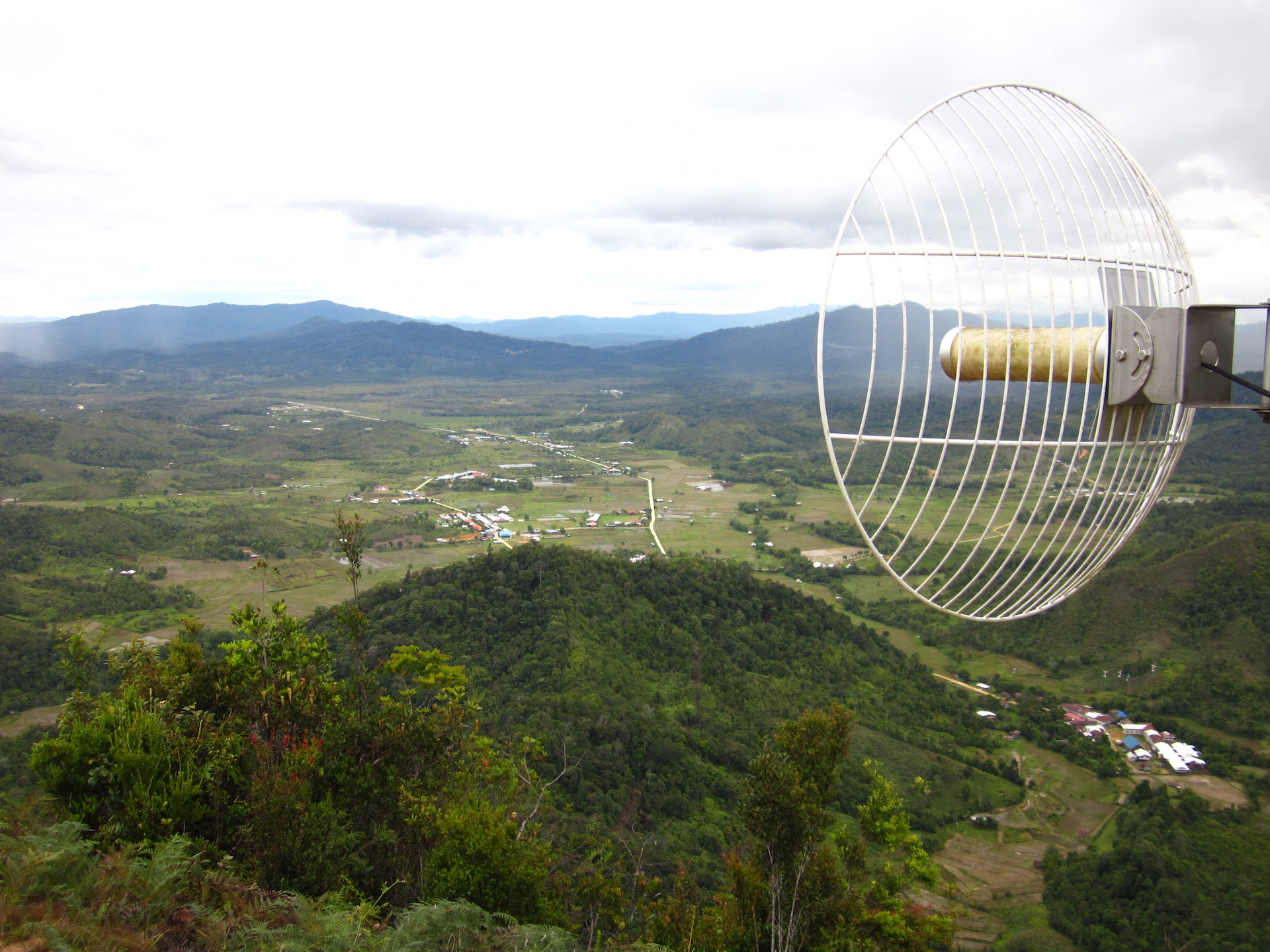Introduction to e-Bario
Bario is located on the remote plateau in the Kelabit Highlands on the island of Borneo, in the state of Sarawak. It is surrounded by densely forested highlands, some rising to as high as 2,400m above sea level. The highlands include Sarawak’s highest peak, the Mount Murud, and has the largest remaining rural concentration of the Kelabit people, with roughly 1000 individuals scattered around a dozen distinct communities. The community’s main economic activity is agriculture, mainly growing Bario rice. The cool climate is also well suited for the cultivation of citrus fruits. Bario is also famous for its Bario made salt and the refreshing Bario pineapple.
In 1998, a research project was initiated by Universiti Malaysia Sarawak (UNIMAS) which sought to build a telecentre for the Kelabit community. This objectives of this telecentre project, also known as the eBario Telecentre or Gatuman eBario, were to demonstrate that access to ICTs, specifically the Internet, could precipitate significant improvements in the lives of such communities. Central to this strategy is two measures: to provide the community with access to the Internet and assess the impact that would have. As part of the program, the researchers spent time with members of the community in order to understand their living condition, their culture, the existing uses and accesses to information sources and their needs for improved information delivery. Baseline studies were conducted in order to understand the conditions of life in the community. In this way a number of prioritized proposals for information systems utilizing the Internet were agreed upon with the community representatives.
Public telephones, computers for the two schools, a community telecentre with computers and with satellite access to the internet were provided for the community through the implementation of this project. The telecentre supports education, e-government services, e-commerce, e-health, tele-medicine and personal communication. It is powered by an innovative hybrid system of solar panels and a diesel generator. Internet access is provided through the use of solar-powered VSAT (very small aperture terminal), a satellite telecommunication system, a pioneering application of this technology in rural Malaysia.
Since the establishment of the Gatuman Bario telecentre in 1999, much has changed in the telecentre. The eBario telecentre has been fully upgraded in July 2010 and a new solar charge controller and inverter were installed at the same time. One other important milestone for eBario is the PANGAEA webcam program, which was conducted on June 26, 2010. The programme has successfully connected a group of children in Bario with some children from Kyoto University, Japan. The first Long Range WiFi Setup was also implemented. The Long Range Wireless using WiFi has been setup and experimented at various places in Bario aiming to extend the network access coverage of the Telecentre in order to support various activities including Pangaea. With the availability of WiFi accessibility in certain places in Bario, network related activities could be carried out not only in the Balai (Hall) near Telecentre but other places such as at the secondary school, Bario Asal and Padang Pasir.
The experimental long-range network is able to satisfy the general requirements of the most network related activities but the choice of activity location may subject to other non-technical factors. To date, the installed equipment may require remedial maintenance from time to time as they are subject to the influence of the environment. In overall, the general aim has been achieved but to continue ensuring the availability of the wireless access, additional works and collaboration will be proposed in the near future.
Some of the projects that have been conducted at Bario by ISITI include Indigenous Technological Innovations in Malaysia: Reducing Vulnerability and Marginalisation among Malaysia’s Indigenous People in Bario, Preservation of the Kelabit Language, Communities Attitudes towards Tourism Development in Rural Tourism Destination – The Role of Information and Communication Technologies, Energy Optimization for Rural ICTs Telecentre and the Bario Radio.
The local community has already taken the first steps into bringing about the second phase of eBario; transforming the telecentre into a knowledge management hub. Through this rebranding process, the role of the telecentre has moved from being a center for technology towards managing the knowledge that this technology makes increasingly accessible. One of the plans that have been put into play is the construction of the community museum, which is located adjacent to the telecentre. eBario now has a new role of digitizing Kelabit culture and traditions for the benefit of future generations, alongside with Radio Bario which will be taking on the role of preserving the Kelabit language.
Apart from that, eBario will also act as a research center in promoting the Highlands as a research destination. In light of the growing interest in Sustainable Development Goals (SDGs) and contributions that rural communities can provide towards greater understanding of climate change and its impact on fragile eco-systems and the insights into the adaptation methods that can mitigate its effects, the Kelabit community is now ready to contribute their experiences with eBario towards the SDGs, as members of FORMADAT (The Alliance of the Indigenous Peoples of the Highlands of Borneo).
As a winner of the Equator Prize 2015 – an international award by the UN that recognizes outstanding local achievement in advancing sustainable development solutions for people, nature and resilient communities- FORMADAT is positioned to achieve global influence, with eBario poised as a key contributor to the processes of knowledge generation and management that will ensure that the traditional knowledge of its members will achieve its full contribution towards the SDGs. By acting as a research centre, eBario will be able to facilitate research activities, communicate the results to the world and make them relevant and useful to the residents of the Highlands. This in turn will further escalate the potentials of eBario, and put the spotlight on Bario as more than a popular tourist destination, but also as a central hub for local and international researchers who are interested in issues regarding the sustainability of the Heart of Borneo, community resilience in the face of climate change and the contribution of traditional knowledge to the SDGs.
